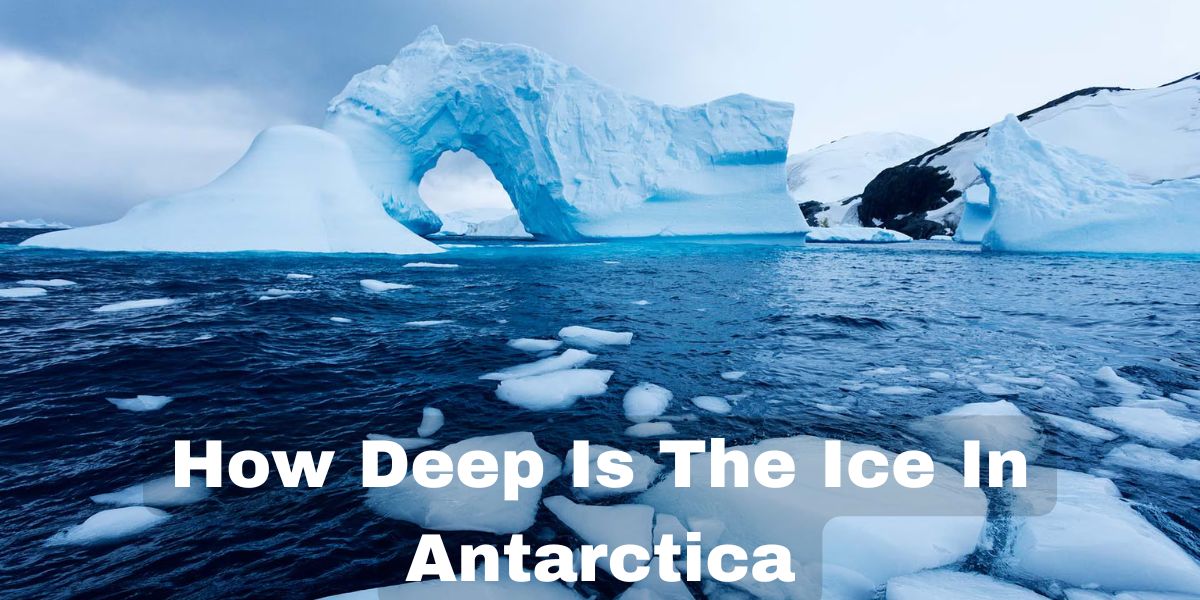How Deep Is The Ice In Antarctica:- Antarctica, which is sort of 4 instances the dimensions of the United States, is sort of totally lined by a miles-thick layer of ice.
But the South Pole hasn’t all the time been frozen. So when was the final time Antarctica was ice-free?
This ice cap shaped comparatively not too long ago in geological phrases, consultants advised Live Science. “I think most people would say 34 million years ago was when the ice sheet first formed in Antarctica,” stated Eric Wolff, a paleoclimatologist on the University of Cambridge. “[Previously] most of it would have been like northern Canada today — tundra and coniferous forest.
How Long Has Antarctica Been Frozen For

Global temperatures are a key factor influencing the extent of ice coverage. Around 50 million years ago, the world was about 25 degrees Fahrenheit (14 degrees Celsius) warmer than it is today, but temperatures steadily decreased over the following 16 million years. By 34 million years ago — a time period known as the Eocene-Oligocene boundary — the climate was 14.4 F (8 C) warmer than it is today.
Table of Contents
What Did Antarctica Look Like Before Ice
But what triggered this temperature drop, and was that each one it took for the ice sheets to kind?
“There are two factors, and probably both were in play,” Wolff advised Live Science. “One of them is a change in the carbon dioxide concentration of the atmospheHow deep is the ice in Antarctica,re, and the other is the movements of the continents and, in particular, the opening up of the Drake Passage,” the strait between South America and Antarctica that connects the South Atlantic with the South Pacific.
The extra carbon dioxide that is within the environment, the extra warmth is trapped and the hotter the planet is.
From about 60 million to 50 million years in the past, the carbon dioxide focus in Earth’s environment was actually excessive — someplace round 1,000 to 2,000 elements per million, or between 2.5 to five occasions today’s levels, stated Tina van de Flierdt, a geochemist at Imperial College London.
When Was The Last Time The Arctic Was Ice-Free
“But we know that the CO2 in the atmosphere came down across that Eocene-Oligocene boundary,” she advised Live Science. This lower in atmospheric CO2 would have been accompanied by a cooling of the worldwide local weather, she added, in all probability tipping Earth over a threshold and permitting ice sheets to type.
However, there was additionally seemingly localized cooling on the Antarctic continent attributable to plate tectonics, Wolff stated. Around this time, South America and Antarctica lastly separated, opening up what’s now the Drake Passage.
“This led to what we call a circumpolar current — water going right around Antarctica in a circle,” Wolff stated. “This isolates Antarctica from the rest of the world and makes it much harder for warm air masses to get across the Southern Ocean and, therefore, makes Antarctica colder.

Plate tectonics additionally straight influenced carbon dioxide ranges, he added. Rock weathering and volcanic exercise are each a part of the carbon cycle, so over 1000’s of years, geological processes can shift the steadiness of gases within the environment.
Although some uncertainty stays, researchers are pretty assured about this transition 34 million years in the past due to the chemical signatures in rock sediments. Oxygen atoms exist in two varieties: oxygen-16 (frequent oxygen) and oxygen-18 (heavy oxygen). Continental ice accommodates a better proportion of the lighter oxygen-16, that means the oceans — and, subsequently, the shells of small sea creatures — include a better share of oxygen-18 when ice sheets are larger.
How Deep Is The Ice In Antarctica
Read More:-

